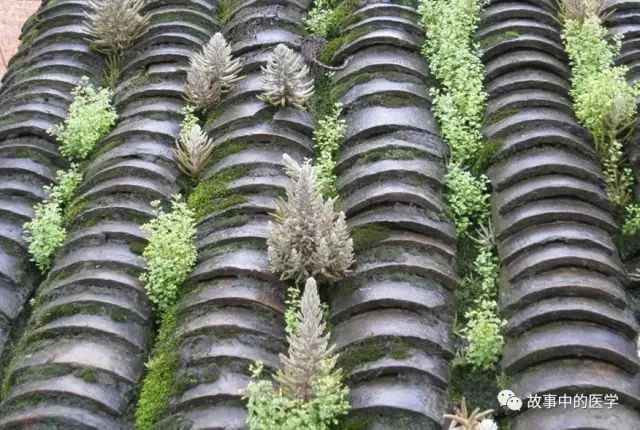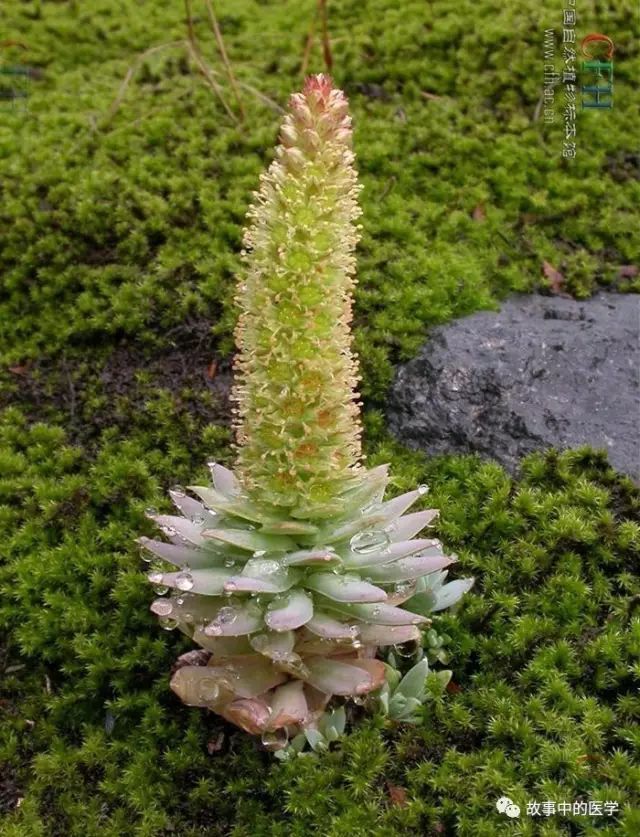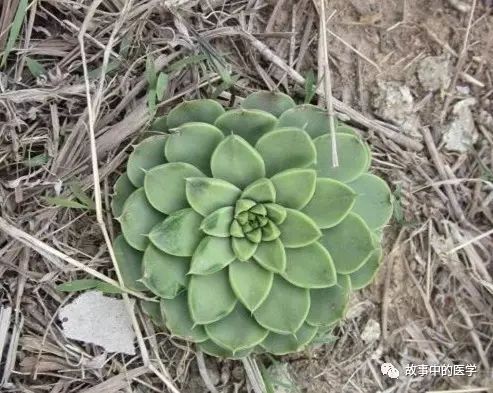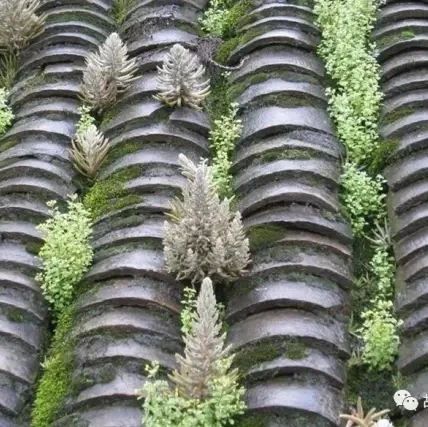
In my childhood, the old tile-roofed houses were abundant, and the Wason (瓦松) growing in the crevices of the green tiles is an unforgettable memory. The patches of green and gray colors adorned the old houses, bursting with vitality, making one want to climb onto the roof to admire them. Nowadays, the old tile-roofed houses are nearly extinct, and the few surviving ones no longer have the spectacular scenery they once provided, only occasionally seen in scattered distributions.
The name Wason comes from its resemblance to pine and its preference for tiles, hence it is called Wason. It refers to the whole herb of the Crassulaceae family plant Wason or Late Red Wason. It is often found on sunny slopes in deep mountains and in the crevices of rocks. It has many aliases, including rootless grass on roofs, skyward grass, stone lotus flower, tile flower, house lotus, tile tower, and tile jade.
It is a biennial succulent plant, forming a rosette shape in the first year, hence the name stone lotus flower. In autumn and winter, it enters a dormant period, and the rosette-shaped leaves wither.
In the second year, when the spring breeze blows, the rosette leaves of Wason become graceful and elongated, growing freely under the spring and summer sun. In autumn, flower stalks emerge from the center of the rosette, densely blooming with small flowers, and the purple-red spike-like flower clusters resemble a miniature tree, which is extremely lovely!
Wason requires only a little rainwater and a bit of soil to survive, yet it brings infinite beauty and rich medicinal effects. Its properties are sour, bitter, and cool. It enters the Liver (肝) and Lung (肺) meridians. It clears heat and detoxifies, promotes diuresis and reduces swelling, and can be used for pneumonia, hepatitis, toothache, bloody dysentery, hemorrhoids, blood in stool, and non-healing sores.
During the summer and autumn when Wason flowers, it is harvested, removing the roots and impurities, and the scales, stems, and leaves are dried to become a preserved medicinal material.

Selected Formulas:
1. For pneumonia: Fresh Wason, about 120-240g each time, wash with cold boiled water, crush and extract the juice, slightly heat for internal use, take twice daily. (“Fujian Folk Herbal Medicine”)
2. For swollen and painful gums: Wason flowers and alum in equal parts. Decoction for gargling. (“Zhai Yuan Fang”)
3. For nosebleeds: Two jin of fresh Wason. Wash, dry in the shade, crush, extract juice with gauze, mix with five qian of sugar, and dry into blocks. Take 1.5-3g each time, twice daily, with warm boiled water. Avoid spicy and irritating foods and hot water. (“Quanzhan Selected Compilation – Otorhinolaryngology”)
4. For heat toxin from alcohol accumulation and intestinal wind blood dysentery: Wason 240g (juice, mixed with half wine), Bai Shao (白芍药) 15g, Pao Jiang (炮姜) 15g. Decoction until reduced by half, take on an empty stomach. (“Tang Ben Cao”)
5. For acute non-jaundice infectious hepatitis: Wason 60g, malt 30g, tender branches of willow 9g. Decoction for oral administration.
6. For malaria: Fresh Wason flowers 15g, one liang of liquor, stew in water, take on an empty stomach in the morning. Continue for one to three doses. (“Zhejiang Commonly Used Folk Herbs”)
7. For pediatric convulsions: Wason 15-18g, decoct for oral administration. (“Zhejiang Commonly Used Folk Herbs”)
8. For sand-like painful urination: Wason decoction, use hot steam to wash the lower abdomen. (“Experience Good Formulas”)
9. For heat dysuria and leukorrhea: Wason decoction mixed with white sugar for oral administration. (“Sichuan Traditional Medicine Records”)
10. For chapped lips and sores: Wason flowers and ginger. Add a little salt, crush and apply. (“Zhai Yuan Fang”)
11. For scalp wind and white flakes: Use dried Wason, pour ash and wash with hot water. After six or seven times, effects will be seen. (“Sheng Hui Fang”)
12. For eczema: Dried Wason, burn to ash and grind into powder, mix with tea oil for application to relieve pain and itching. (“Quanzhou Ben Cao”)

13. For hemorrhoids: (1) Wason stewed with pig large intestine head for consumption. (“Sichuan Traditional Medicine Records”) (2) Fresh Wason, decocted and used for steaming and washing the affected area. (“Zhejiang Commonly Used Folk Herbs”)
14. For moxibustion sores and chronic ulcers that do not heal: Dried Wason, powdered, first wash with locust branch and scallion soup, then mix. (“Jisheng Miliang”)
15. For rabid dog bites: Wason and realgar. Grind and apply. (“Sheng Sheng Bian”)
16. For centipede bites: Fresh Wason 60g, a little sour rice, crush and heat, apply to the affected area. (“Quanzhou Ben Cao”)
Reminder: Everyone’s physical condition is different, and the formulas provided in the article should be adjusted according to individual conditions. It is recommended to seek guidance from a professional doctor. (Images from the internet, please contact for removal if there is any infringement.)

Scan to follow me!



